
The Guadeloupe Islands form an archipelago that comprises five main islands—Basse-Terre, Grande-Terre, Marie-Galante, La Désirade, and Les Saintes. Like Martinique this is French Overseas Territory and part of EU (outermost regions) and thus right-hand traffic, Euros as currency and no extra roaming charges for us Swedes! The two largest islands, Basse-Terre and Grande Terre, nicknamed the “Butterfly Archipelago” due to their shape, are connected by a narrow channel known as Rivière Salée. In this spot, near the city of Pointe-à-Pitre we anchored.
The city is pleasant with both old apartment buildings and new business areas. There are pedestrian streets and a square where a fruit and vegetable market is held almost every day. In a special place by the square, drummers appear, often spontaneously, playing local songs. It's hard not to get carried away by the rhythms! Both in and outside the city, as well as on the beaches, you can see small groups of hens calmly pecking, sometimes with chirping chickens around them and roosters competing to crow the loudest. Around the town, the hilly landscape spreads out, where goats graze freely. At some steep cliffs facing the sea, I (Malin) watched for a long time a goat with her two kids carelessly jumping and climbing around like little fools over the cliff. The mother goat seemed unconcerned and calmly chewed on a bush. I was absolutely certain that one of the kids would fall into the sea and was ready with the dinghy to rescue(!) but miraculously they all escaped unharmed and jumped on towards the mountains.
Guadeloupe shares the same history as the other Caribbean islands we have visited, shaped by centuries of colonization, slavery, and cultural exchange. Just at our anchorage the Memorial ACTe museum was located. The museum was completed in 2015 and one of its statements’ is “The History of slavery belongs to Guadeloupeans and residents of the Caribbean, but it also concerns the whole of Humanity. This memorial and research site brings together all populations around a common past, but most importantly, it encourages them to reflect on the notion of liberty, on fundamental freedoms and on living together.” We found this museum and the exhibitions to be not only exceptional and comprehensive but also touching. We gained insights to the complex history of Guadeloupe, from the harrowing legacy of slavery in the Caribbean (where so many countries, including Sweden, were involved in the trade) to the resilience and strength of its people and the ongoing quest for justice and equality. The exhibitions encompassed the history from the genocide of early Amerindian settlers to today's global problems of child labor and trafficking. Sadly, the museum is starting to fall into disrepair and there seems not to be funds enough to keep it in good condition.
One of our missions upon arrival was to send off our collected samples of Sargassum seaweed to the researcher of Sea Keepers. Venturing into the bustling streets, we sought out the nearest FedEx office, a task made easier with the rented car, which also granted us the freedom to delve deeper into Guadeloupe's landscapes. The receptionist at FedEx told us that Sargassum is a serious issue for the island's inhabitants. Enormous amounts of sargassum washes up on the shores and the hydrogen sulfide gas released by the seaweed is a harm for both animals and people. Later we had a virtual meeting with Citizen Science Manager at Sea Keepers discussing further Sargassum sampling and future collaborations in other research projects as we chart our course towards the Pacific.
One of the highlights of our exploration was visiting the verdant National Park with rainforest, cascading waterfalls, exotic flora, and the symphony of tropical bird and frog life! After much investigation and map-reading, we finally also reached a site with traces of the island's ancient past - the petroglyphs etched by the Amerindians at Ballif. Very similar to other petroglyphs on other Caribbean islands but very different from, and unfortunately not so well preserved, as many of the rock-carvings we are used to see in Sweden from the same era. While driving around we also managed to visit a rum museum where we learned more about the history of rum making and got to taste some different varieties.
Another of our missions to complete, given the opportunity of being able to use our mobile data without roaming fees 😊 was the virtual meetings with eager fifth and sixth-grade pupils in Trollhättan and Vänersborg. We shared our experiences of life aboard Anastacia, answering loads of questions -many related to their geography lessons. But, the most common questions we got from all classes (not without lots of giggling) was the cost of our boat and the logistics of waste management while at sea (or, using their words: “What do you do with the pee and poo while sailing?” 😁) The pupils’ enthusiasm was infectious. We really hope we will have the opportunity to meet them again!
For a few days we anchored off the shores of Marie-Galante. Here we took the opportunity to free dive with snorkel equipment and scrape algae and shells off Anastacia's hull using ice scrapers we brought from Sweden. A full day's work for both of us! We are probably not in the same physical condition as ten years ago, we noted, but we completed the task! Then there was a short sightseeing on the island where most things went at a slow pace. The island is known as the "Island of a Hundred Windmills" with large sugarcane fields where the windmills were once used to squeeze the juice from the sugarcane in the rum production. The island is round and relatively flat, which is why another popular nickname is "the pancake"
Later we sailed to the more touristic but also more picturesque island of Terre-de-Haut in Les Saintes, where reunions with friends on S/Y Alba and snorkeling adventures awaited.
Now we have once again anchored just outside the ACTe museum in Pointe-à-Pitre. We will celebrate Easter here waiting for more favorable winds so we can sail further northeast towards Antigua and Barbuda. The Easter celebration here is very much about Catholic ceremonies, family gatherings as well as picnicking and camping on the beaches. Although there are western customs, with Easter eggs, etc., the tradition is to eat stews with lamb or goat meat and, even more popular, various dishes containing crabs caught in the mangrove swamps.
Happy easter!🦀
~~~~~~~~~
Guadeloupeöarna bildar en skärgård som främst består av fem huvudöar – Basse-Terre, Grande-Terre, Marie-Galante, La Désirade och Les Saintes. Liksom Martinique är detta franskt utomeuropeiskt territorium och en del av EU (yttersta randområdena) och därmed gäller högertrafik, Euro som valuta och inga extra roamingavgifter för oss svenskar! De två största öarna, Basse-Terre och Grande Terre, med smeknamnet "Fjärilsskärgården" på grund av sin form, är förbundna med en smal kanal som kallas Rivière Salée. På denna plats, nära staden Pointe-à-Pitre, ankrade vi.
Staden är trevlig med både gamla hyreshus och nya affärsområden. Det finns gågator och ett torg där det hålls en frukt- och grönsaksmarknad nästan varje dag. På en speciell plats vid torget dyker trummisar upp, ofta spontant, och spelar lokala låtar. Det är svårt att inte ryckas med av rytmerna! Både i och utanför staden, såväl som på stränderna, kan man se små grupper av höns som lugnt pickar, ibland med pipane kycklingar runt sig och tuppar som tävlar om att gala högst. Runt staden breder det kuperade landskapet ut sig, där getter betar fritt. Vid några branta klippor mot havet såg jag (Malin) länge en get med sina två killingar som hoppade och klättrade runt som små tokar över klippan. Mammageten verkade oberörd och tuggade lugnt på en buske. Jag var helt säker på att en av killingarna skulle falla i havet och stod redo med jollen för att komma till undsättning(!) men mirakulöst nog klarade de sig alla oskadda och hoppade vidare mot bergen.
Guadeloupe delar samma historia som de andra karibiska öarna vi har besökt, formad av århundraden av kolonisering, slaveri och kulturellt utbyte. Precis vid vår ankarplats låg Memorial ACTe-museet. Museet stod färdigt 2015 och ett av dess tillkännagivanden är: "Slaveriets historia tillhör invånarna i Guadeloupe och Karibien, men det berör också hela mänskligheten. Denna minnesplats och forskningsplats samlar alla folk kring ett gemensamt förflutet, men viktigast av allt, det uppmuntrar dem att reflektera över begreppet frihet, om grundläggande friheter och om att leva tillsammans.” Vi upplevde museet och utställningarna inte bara som exceptionella och omfattande utan också berörande. Vi fick bättre förståelse för Guadeloupes komplexa historia, från slaveriets hemska arv i Karibien (där så många länder, inklusive Sverige, var involverade i handeln) till folkets motstånd och styrka och ständiga strävan efter rättvisa och jämlikhet. Utställningarna omfattade historien från folkmorden på tidiga Amerindiska bosättare till dagens globala problem med barnarbete och trafficking. Tyvärr börjar museet förfalla och det verkar inte finnas tillräckligt med medel för att hålla det i gott skick.
Ett av våra ärenden vid ankomsten var att skicka våra insamlade prover av Sargassum till forskaren vid Sea Keepers. När vi gav oss ut på de livliga gatorna sökte vi upp närmaste FedEx-kontor, en uppgift som blev lite enklare med bilen som vi hyrt, som också gav oss friheten att utforska mer av Guadeloupe. Receptionisten på FedEx berättade att Sargassotången är ett allvarligt problem för öns invånare. Enorma mängder Sargassum sköljs upp på stränderna och svavelvätet som tången friger kan skada både djur och människor. Senare hade vi ett virtuellt möte med ansvarig på Sea Keepers och diskuterade ytterligare Sargassum-provtagning och framtida samarbeten i andra forskningsprojekt när vi så småningom lägger kursen mot Stilla havet.
En av höjdpunkterna i utforskandet av ön var att besöka den grönskande nationalparken med regnskog, forsande vattenfall, exotisk flora och symfonin av tropiskt fågel- och grodliv! Efter mycket letande och kartläsande nådde vi också äntligen en plats vi sökt efter, med spår av öns tidiga förflutna - hällbilder ristade av Amerindierna vid Ballif. Väldigt lika andra hällristningar på andra karibiska öar men väldigt olika, och tyvärr inte så välbevarade, som många av de hällristningar vi är vana vid att se i Sverige från samma tid.
Medan vi körde runt på ön, hann vi också besöka ett rommuseum där vi lärde oss mer om romtillverkningens historia och fick smaka på några olika sorter.
Ett annat uppdrag vi hade, givet möjligheten att kunna använda vår mobildata utan roamingavgifter 😊, var de virtuella mötena med ivriga fem- och sjätteklassare i Trollhättan och Vänersborg. Vi delade med oss av våra erfarenheter av livet ombord på Anastacia och svarade på massor av frågor - många relaterade till deras geografilektioner men, de vanligaste frågorna vi fick från samtliga klasser (inte utan mycket fniss) handlade om hur mycket båten kostade och hur avfallshanteringen funkar när man är till sjöss (eller, för att använda barnens egna ord: ”vad händer med kisset och bajset när ni seglar?” 😁)” Elevernas entusiasm smittade av sig. Hoppas vi får möjlighet att träffa dem igen!
Under några dagar ankrade vi utanför Marie-Galantes stränder. Här passade vi på att fridyka med snorkelutrustning och skrapa alger och snäckor av Anastacias skrov med hjälp av isskrapor vi tagit med från Sverige. En hel dags jobb för oss båda! Vi är nog inte i samma fysiska skick som för tio år sedan, konstaterade vi, men vi genomförde projektet! Sedan blev det en kort sightseeing på ön där det mesta gick i långsam takt. Ön är känd som "De hundra väderkvarnarnas ö" med stora sockerrörsfält där väderkvarnarna en gång i tiden användes för att pressa saften från sockerrören i romtillverkningen. Ön är rund och relativt platt, varför ett annat populärt smeknamn är "pannkakan"
Senare seglade vi till den mer turistiska men också mer pittoreska ön Terre-de-Haut i Les Saintes, där återseende med vänner på S/Y Alba och snorklingsäventyr väntade.
Nu har vi återigen ankrat strax utanför ACTe-museet i Pointe-à-Pitre. Vi kommer att fira påsk här i väntan på gynnsammare vindar så att vi kan segla vidare nordost mot Antigua och Barbuda. Påskfirandet här handlar mycket om katolska ceremonier, familjesammankomster samt picknick och camping på stränderna. Även om det finns västerländska seder, med påskägg etc., är traditionen att äta grytor med lamm- eller getkött och, ännu mer allmänt omtyckt, olika rätter som innehåller krabbor som fångats i mangroveträsken.
Glad påsk! 🦀
Pointe-à-Pitre
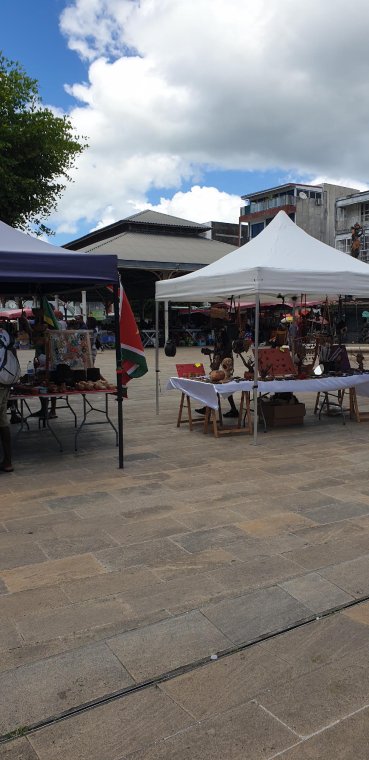
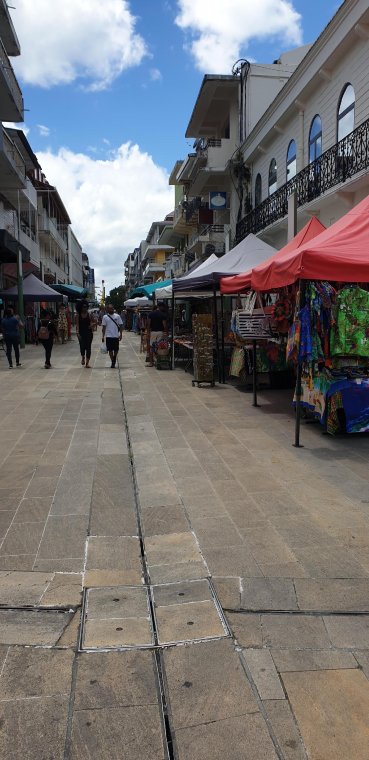
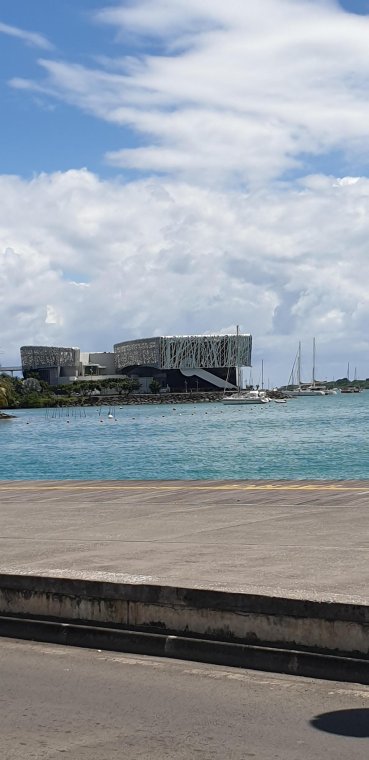
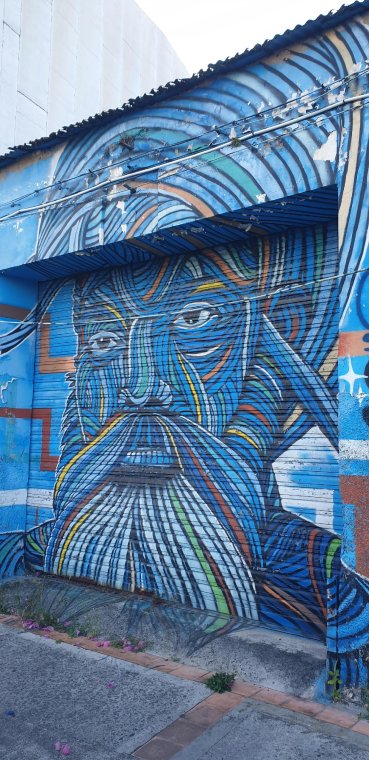
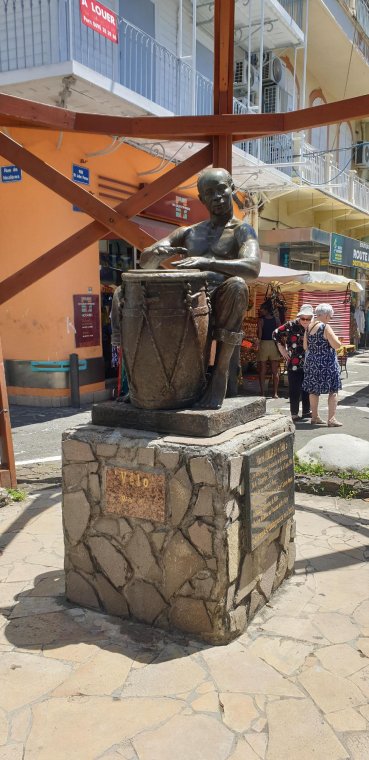
Talking to school pupils about sailing and the Caribbean
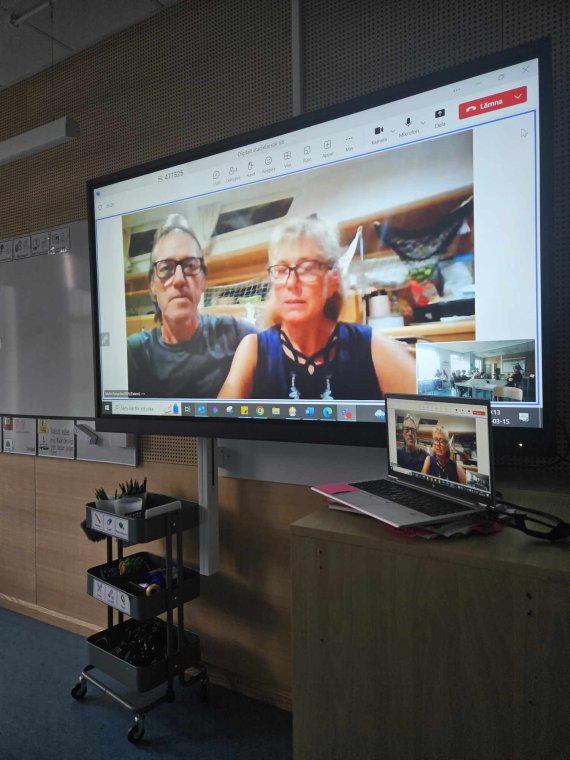
The forest
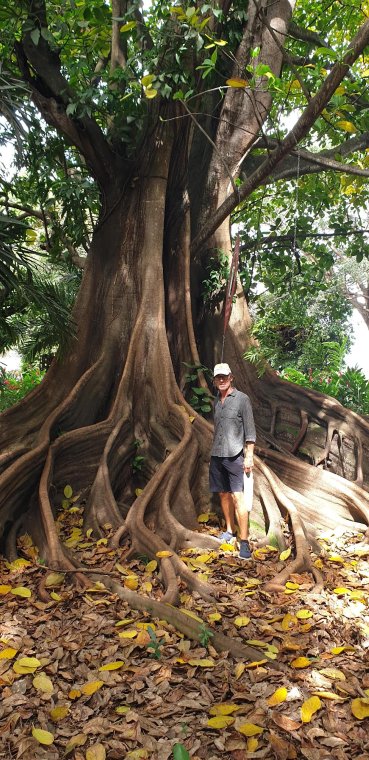
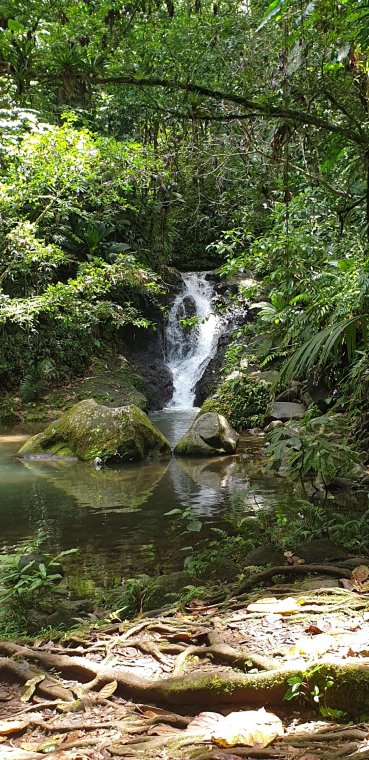
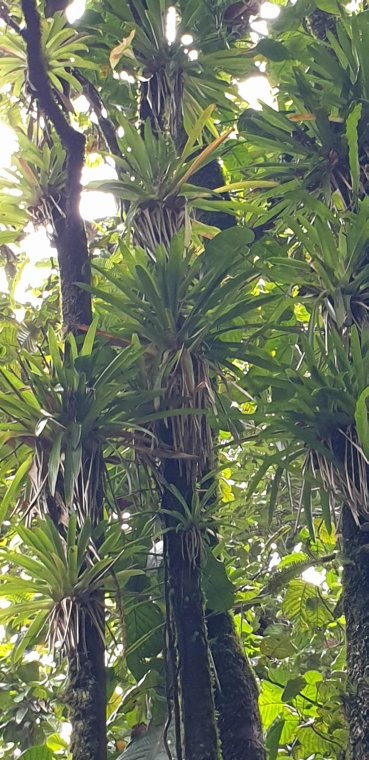
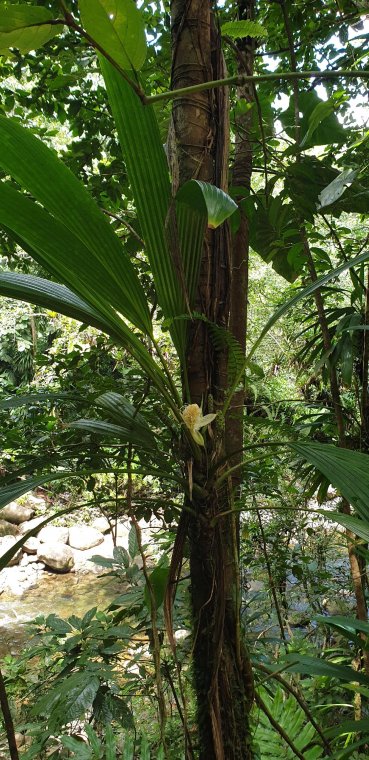
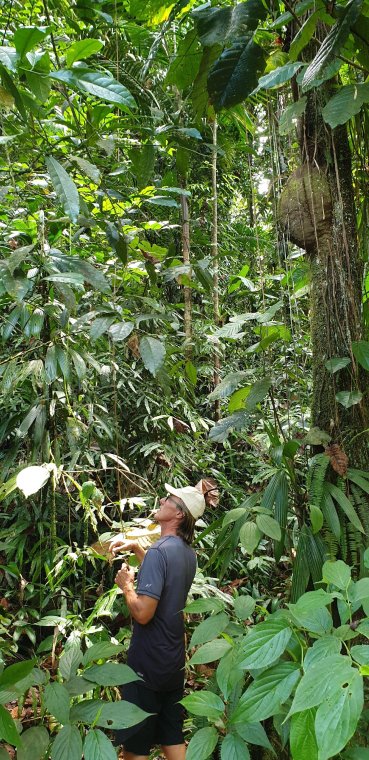
"Wild"life
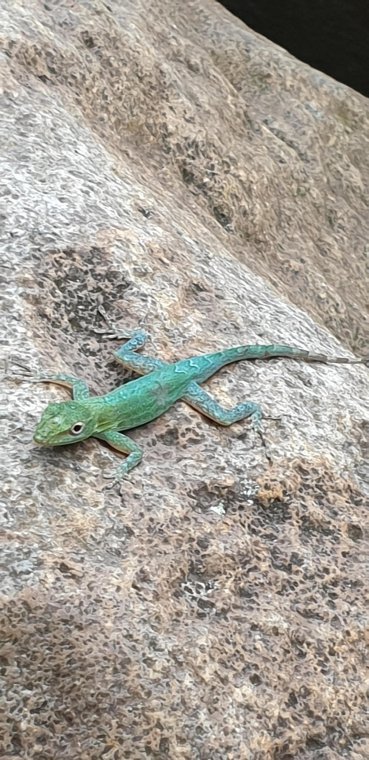
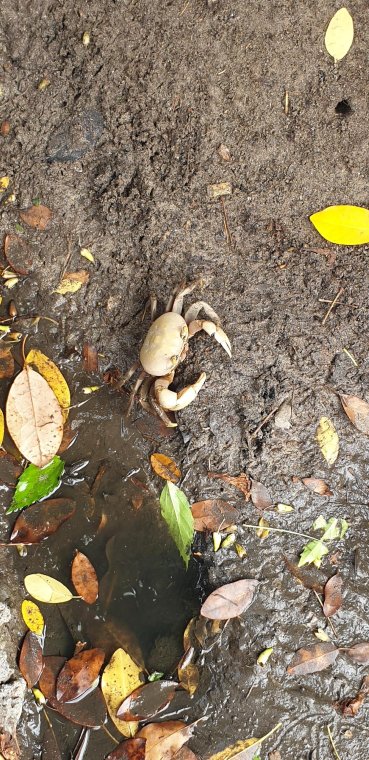
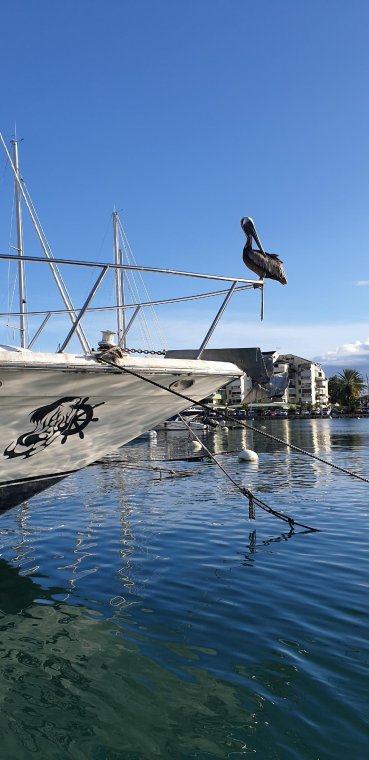
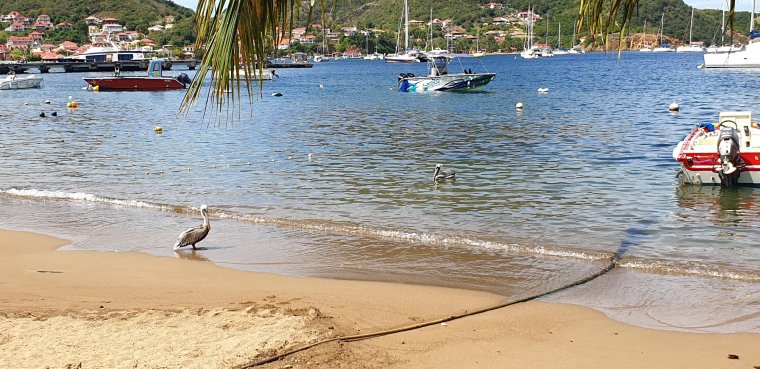
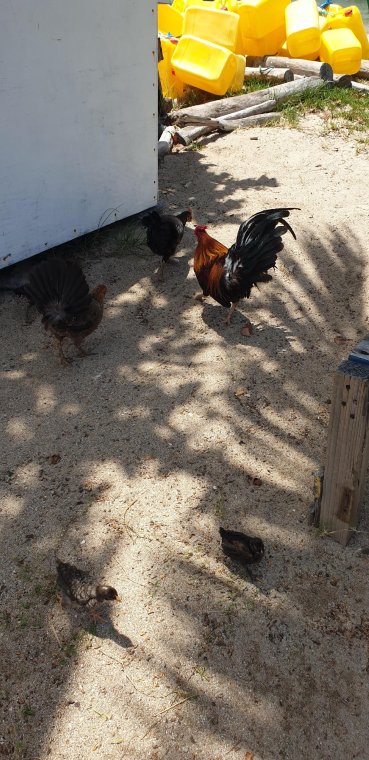
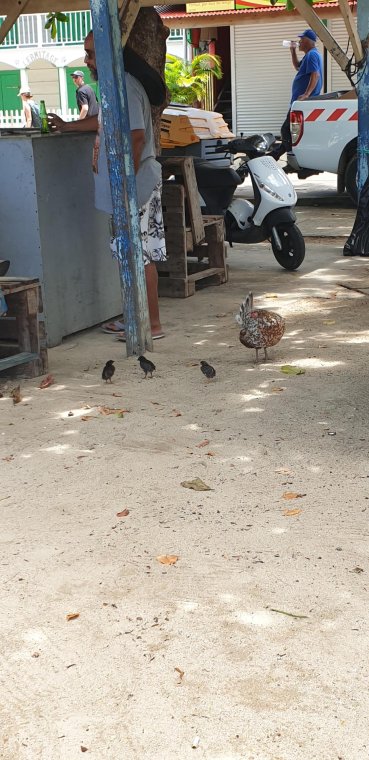
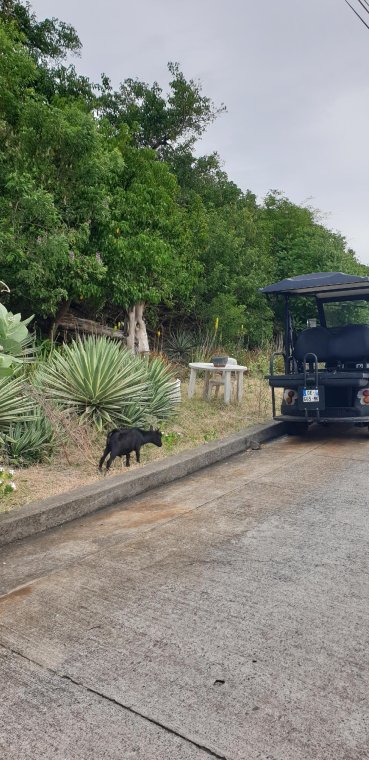
Petroglyphs by the Amerindians
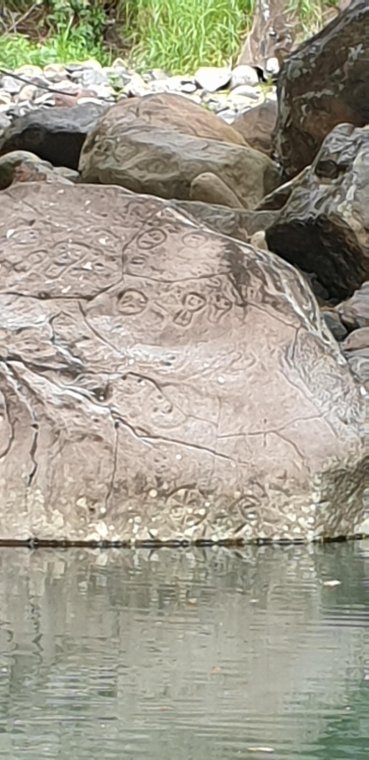
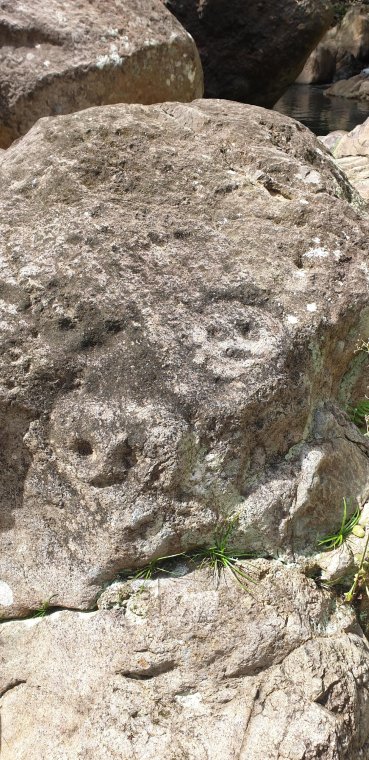
Terre-de-Haut in Les Saintes
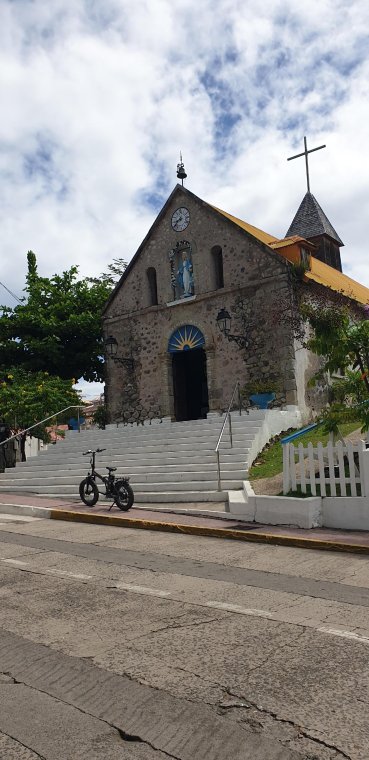
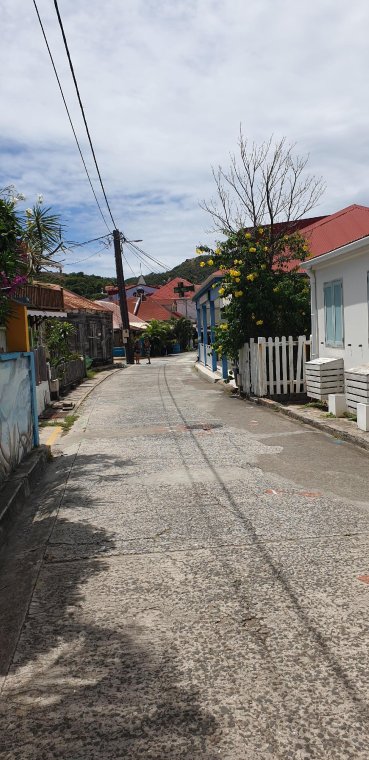
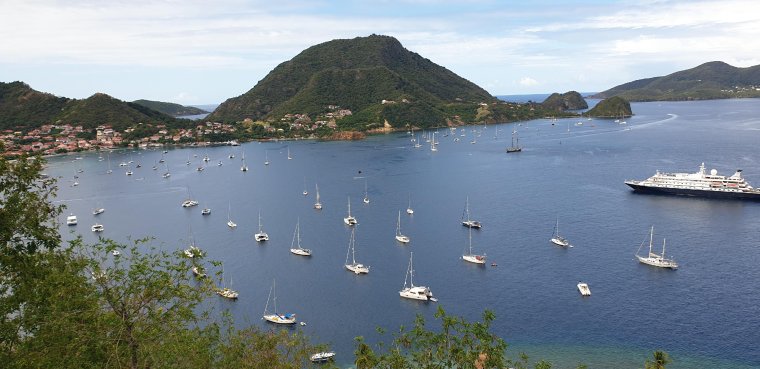

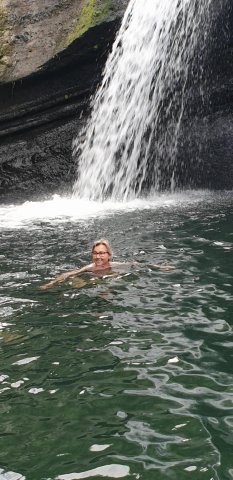
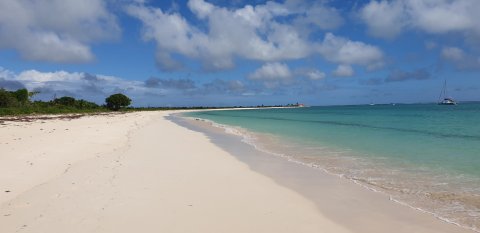
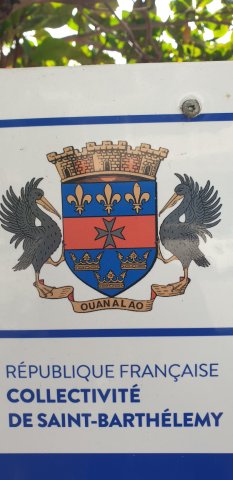
















2 Commentaire(s)
👍👍⛵️
31 March 2024 AnswerÄnnu ett läsäventyr. Underbart! Glad Påsk! Kramar
31 March 2024 Answer